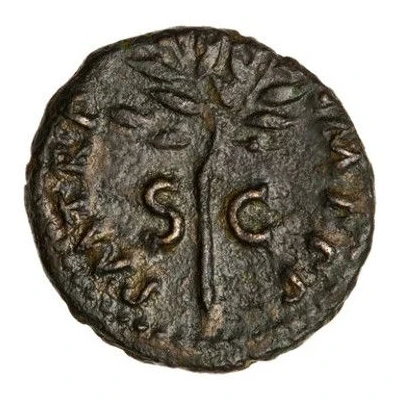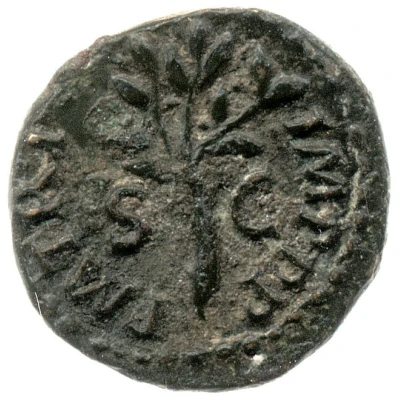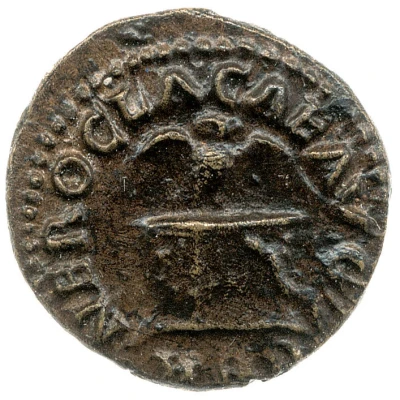


© American Numismatic Society (ANS)
Quadrans P M TR P IMP P P S C
| Bronze | 2.2 g | 16 mm |
| Issuer | Rome › Roman Empire (27 BC - 395 AD) |
|---|---|
| Emperor | Nero (Lucius Domitius Ahenobarbus) (54-68) |
| Type | Standard circulation coin |
| Years | 62-68 |
| Value | 1 Quadrans = ¼ As = 1⁄64 Denarius |
| Currency | Denarius, Reform of Augustus (27 BC – AD 215) |
| Composition | Bronze |
| Weight | 2.2 g |
| Diameter | 16 mm |
| Shape | Round (irregular) |
| Technique | Hammered |
| Demonetized | Yes |
| Updated | 2024-10-06 |
| Numista | N#246469 |
|---|---|
| Rarity index | 100% |
Reverse
Olive-branch, upright; sometimes three dots above.
Script: Latin
Lettering: P M TR P IMP P P S C
Translation:
Pontifex Maximus, Tribunicia Potestas, Imperator, Pater Patriae, Senatus Consultum.
High priest, tribunician power, supreme commander (Imperator), father of the country. Decree of the senate.
Comment
Mass varies: 1.14–3.29 g;Diameter varies: 15–17.5 mm;
Source: Online Coins of the Roman Empire (OCRE)
Interesting fact
One interesting fact about the Quadrans coin is that it was used as a form of currency during the Roman Empire, specifically during the reign of Emperor Nero (54-68 AD). The coin's design features the image of a goddess, likely Ceres, on the obverse (front side), and a wreath surrounding the Roman numeral "X" on the reverse (back side). The Quadrans was the lowest denomination coin in the Roman Empire's currency system and was used for everyday transactions, such as buying food or other small items. Despite its small value, the Quadrans played an important role in the economy of ancient Rome and was widely used throughout the empire.



